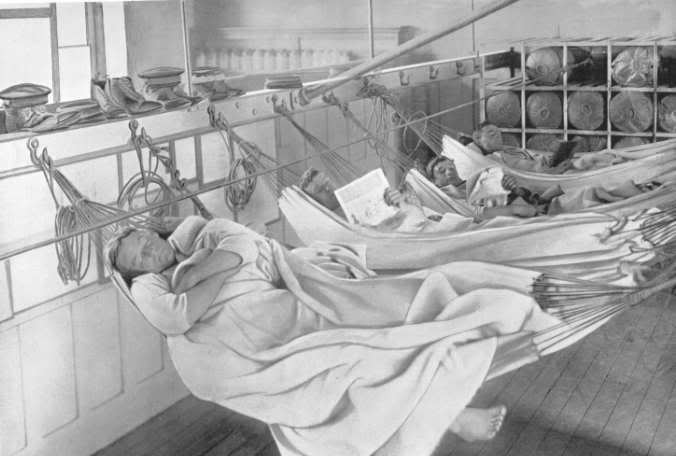You wake up and find yourself sometime in the 1800s, the day before Christmas, looking down a busy main street of a town somewhere on the Eastern sea board of the Untied States. A light, wet, snow is falling. It's over cast, but you can tell from the sun that it's not yet mid-day.
Naturally, your first thought is your overnight accommodations, not knowing how long you'll be visiting the past. And naturally those accommodations must include a hammock. And a tarp. And an under quilt. And warmer clothing.
You get the idea.
So, knowing what you know now about hammock camping, and knowing your resources are limited in this time period (e.g., no cuben fiber, no synthetics, etc.), how would you go about making your kit? To your delight, a fabric store is right around the corner, and it has just about every type of fabric and notion you can get during this time period. A tailor's shop is next door. Perfect. It's time to go shopping.
THE HAMMOCK
There's plenty of cotton bolts adorning the shelves, but you want something a little lighter and something that won't absorb water like a sponge. An aisle of silks catches your eye. There's several different weights here, so you find something that is strong enough to hold your weight.
THE QUILTS
Silk will work well for top and bottom quilts as well, but what about fill? There's some white goose down in some cotton bags down another aisle, but it's probably, at best, 600 fill power, with a few feathers thrown in for good measure. Will the silk be down proof?
Shock cord probably isn't available, but you can get away with small twine and just fiddle with adjustable knots like the Taut Line Hitch.
The fabric store has a special price on wool, so you pick up a bolt or two of different weights to make a combination top quilt/serape for multi-function use.
THE TARP
There's probably no other choice than the heavy canvas you saw when you first starting combing the aisles. It's winter, so you'll might as well make a camping hut with side walls and doors. Actually, there was a mercantile shop across the street where you can pick up a canvas tent, pre-made. You decide to pick up a small pot-belly stove as well, complete with a chimney.
ACCESSORIES
You pick up some leather straps and metal rings and an assortment of twine and rope for suspension lines and rigging hardware. The mercantile shop also has a frame pack that you can use to carry most of your gear, but the canvas tent is a bit too much.
So you get a pack horse.
# # #















 Reply With Quote
Reply With Quote

Bookmarks